《THE CREATION OF STATES IN INTERNATIONAL LAW》
| 作者 | 编者 |
|---|---|
| 出版 | CLARENDON PRESS·OXFORD |
| 参考页数 | 498 |
| 出版时间 | 1979(求助前请核对) 目录预览 |
| ISBN号 | 0198253478 — 求助条款 |
| PDF编号 | 812893928(仅供预览,未存储实际文件) |
| 求助格式 | 扫描PDF(若分多册发行,每次仅能受理1册) |
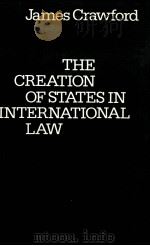
PART Ⅰ:THE CONCEPT OF STATEHOOD IN INTERNATIONAL LAW3
1.STATEHOOD,RECOGNITION,AND INTERNATIONAL LAW3
1.1 Introductory3
1.2 Statehood in early international law5
(1)Doctrine5
(2)Some aspects of State practice9
1.3 Recognition and Statehood10
(1)The early view of recognition10
(2)Positivism and recognition12
(3)Statehood in nineteenth-century international law12
1.4 Recognition of States in modern international law15
(1)Introductory15
(2)Recognition:the great debate16
(Ⅰ)The constitutive theory17
(Ⅱ)The declaratory theory20
(3)Conclusions23
1.5 Certain basic concepts25
(1)International legal personality25
(2)'Sovereignty'26
(3)The distinction between'State'and'government'27
(4)The distinction between'State personality'and'State succession'29
2.THE CRITERIA FOR STATEHOOD31
2.1 Introductory31
2.2 Classical criteria for Statehood36
(1)Defined territory36
(2)Permanent population40
(3)Government42
(4)Capacity to enter into relations with other States47
(5)Independence48
(Ⅰ)Separate existence within reasonably coherent frontiers52
(Ⅱ)Absence of subjection to the authority of another State or States52
(a)Formal independence52
(b)Actual independence56
(c)The relation between formal and actual independence69
(6)Sovereignty71
(7)Other criteria71
(Ⅰ)Permanence71
(Ⅱ)Willingness and ability to obey international law72
(Ⅲ)A certain degree of civilization73
(Ⅳ)Recognition74
(Ⅴ)Legal order74
3.CRITERIA FOR STATEHOOD SUGGESTED AS A RESULT OF MODERN DEVELOPMENTS IN INTERNATIONAL LAW77
3.1 Legality and Statehood77
(1)Jus cogens in modern international law79
(Ⅰ)Legal effects of jus cogens on acts or situations other than treaties81
(Ⅱ)Status of entities created by illegal treaties82
(2)Illegality and Statehood:some tentative conclusions83
3.2 Statehood and self-determination84
(1)Self-determination in modern international law85
(Ⅰ)Self-determination before 194585
(Ⅱ)The principle of self-determination in the United Nations Charter89
(Ⅲ)Identifying the unit of self-determination:the problem of criteria91
(a)The mandate and trusteeship systems92
(b)Non-self-governing territories:Chapter XI of the Charter92
(c)Other cases of application of the principle to particular territorial disputes or situations93
(Ⅳ)The consequences of self-determination94
(Ⅴ)Conclusions95
(2)Statehood and the operation of the principle of selfdetermination102
(3)Self-determination and effectiveness:the case of Rhodesia103
3.3 Entities created by the illegal use of force106
(1)The relation between self-determination and the rules relating to the use of force108
(Ⅰ)Assistance to established local insurgents113
(Ⅱ)Military intervention in aid of self-determination114
3.4 Other cases119
(1)Entities not claiming to be States119
(2)Puppet States and the 1949 Geneva Conventions119
(3)Apartheid and the Bantustan policy120
(4)Violation of conventional stipulations providing for independence120
3.5 Non-recognition in modern international law120
(1)Non-recognition and territorial status121
(2)The consequences of non-recognition124
4.ISSUES OF STATEHOOD BEFORE UNITED NATIONS ORGANS129
4.1 General considerations129
4.2 League and United Nations membership131
(1)Membership practice under the League of Nations131
(2)The United Nations:original membership132
(3)The United Nations:admission to membership133
4.3 Statehood for other United Nations purposes137
(1)Statehood and dispute settlement:Articles 32 and 35(2)137
(2)Claims to be parties to the Statute of the International Court of Justice138
(3)Other cases139
4.4 The micro-State problem139
5.THE CRITERIA FOR STATEHOOD APPLIED:SOME SPECIAL CASES142
5.1 General considerations142
5.2 Entities unrecognized as separate States:Taiwan(Formosa)143
(1)Historical background143
(2)The present legal status of Taiwan146
(3)Conclusions151
5.3 Entities recognized as States'for special reasons':The Vatican City and the Holy See152
(1)The international status of the Vatican City154
(2)The international status of the Holy See156
(3)The relation between the Holy See and the State of the City of the Vatican157
5.4'Internationalized territories':The Free City of Danzig160
(1)The concept of'Internationalized territories'160
(2)The legal status of the Free City of Danzig163
(3)Recent trends in internationalization:Cyprus166
PART Ⅱ:THE CREATION OF STATES IN INTERNATIONAL LAW173
6.ORIGINAL ACQUISITION AND PROBLEMS OF STATEHOOD173
6.1 General considerations173
6.2 International status of native communities176
(1)Statehood of native communities176
(2)Legal personality of native communities not regarded as States177
6.3 Acquisition of territory from native communities182
(1)Status of native treaties of cession182
(2)Legal effects of native treaties183
(3)Grants of territory to private persons184
6.4 Original occupation of territory by a new State184
7.THE CREATION AND STATUS OF DEPENDENT STATES AND OTHER DEPENDENT ENTITIES186
7.1 General principles186
7.2 Protectorates and protected States187
(1)Protected States188
(2)International protectorates194
(3)Colonial protectorates198
(4)Legal effects of protectorates201
(Ⅰ)Relations inter se of protected and protecting State201
(Ⅱ)Protectorates and State succession203
(Ⅲ)Termination of protected status205
(Ⅳ)Other legal effects207
7.3 Other cases209
(1)Special treaty relations209
(2)Vassal States and suzerainty209
(3)Autonomy and residual sovereignty211
(4)Spheres of influence214
8.DEVOLUTION215
8.1 Introductory215
8.2 Explicit grants of independence216
(1)Purported but illusory grants of independence218
(2)Partial or incomplete grants of independence218
(3)Grants in violation of self-determination219
(Ⅰ)Grants to unrepresentative governments within selfdetermination units219
(Ⅱ)Grants disruptive of the'territorial integrity'of a self-determination unit220
(4)Grants of independence in furtherance of illegal policies:the Transkei?222
(Ⅰ)Origins of the Transkei:the Bantustan policy222
(Ⅱ)The status of the Transkei225
(5)Colonial enclaves and other rights of pre-emption227
(6)Derogations from grants of independence228
8.3 Relinquishment of sovereignty without grant228
8.4 The gradual devolution of governmental power:general principles229
(1)Preliminary considerations229
(2)The'unitary State'theory230
(3)General principles of the status of devolving entities232
8.5 The principles applied:The devolution of States within the British Commonwealth238
9.SECESSION247
9.1 Secession as a method of the creation of States247
9.2 The criteria for Statehood in secessionary situations248
(1)The relevance of recognition248
(Ⅰ)Metropolitan recognition248
(Ⅱ)Recognition by third States252
(Ⅲ)Recognition of belligerency252
(2)The traditional test of independence in a secessionary situation255
(3)Independence and secession in modern international law257
(Ⅰ)The secession of a self-determination unit258
(a)Secession in furtherance of self-determination258
(b)Secession in violation of self-determination263
(c)The relevance of the illegal use of force263
(Ⅱ)Secession within a metropolitan State263
(Ⅲ)Secession fomented by external illegal force266
9.3 Certain incidents of secession in modern international law266
(1)The legality of secession in modern international law266
(2)Belligerency and insurgency in modern civil war268
(3)The application of the laws of war to civil conflicts269
(4)The problem of intervention:aid to seceding regimes270
(5)Problems of continuity and commencement270
10.THE DIVIDED STATES271
10.1 General principles:the category'divided States'271
10.2 The'two Germanies'273
(1)Quadripartite control and its effects on Germany274
(2)The creation of the Federal Republic of Germany275
(3)The creation of the German Democratic Republic276
(4)Residual quadripartite competences over'Germany as a whole'277
(5)The status of Berlin278
(6)Issues of identity and continuity280
10.3 Other cases of'divided States'281
(1)Korea after 1947281
(2)Vietnam after 1945284
(3)China after 1948286
10.4 Conclusions286
11.UNIONS AND FEDERATIONS OF STATES288
11.1 The classification of political unions288
11.2 Federation,confederation,and other forms of political union290
(1)Real and personal unions290
(2)Federations and confederations291
(3)Unusual formations294
(4)Associated States295
11.3 Unions of States in international organizations295
PART Ⅲ:THE CREATION OF STATES IN INTERNATIONAL ORGANIZATIONS301
12.INTERNATIONAL DISPOSITIVE POWERS301
12.1 Introductory301
12.2 Territorial dispositions by multilateral treaty302
(1)Dispositions in treaties of peace302
(Ⅰ)The nineteenth-century practice302
(Ⅱ)The First World War settlements308
(Ⅲ)The Second World War settlements309
(a)The re-establishment of annexed or conquered States310
(b)Poland 1939-1946311
(2)Dispositions anticipatory of peace treaties312
(3)Dispositions delegated to groups of States313
(4)International status of dispositions pursuant to multilateral treaties315
12.3 Problems of collective recognition319
(1)The concept of'collective recognition'319
(2)Collective recognition in international organizations322
(3)Collective conditional recognition322
12.4 Territorial dispositions by international organizations323
(1)General principles323
(2)The Concert of Europe324
(3)The League of Nations325
(4)The United Nations and territorial dispositions325
(Ⅰ)General principles:delegated and inherent authority325
(a)General Assembly328
(b)The Security Council328
(Ⅱ)Functions pursuant to the peace treaties329
(a)Trieste329
(b)Disposition of Italian Colonies in Africa330
(Ⅲ)Functions pursuant to the Mandate and Trusteeship Systems332
(Ⅳ)Other cases332
(a)West Irian332
(b)Jerusalem333
(Ⅴ)Conclusion333
12.5 The notion of'international dispositive powers'333
13.MANDATES AND TRUST TERRITORIES335
13.1 General335
13.2 Termination of Mandates and Trusteeships337
(1)Termination of Mandates337
(Ⅰ)During the period of the League337
(Ⅱ)After the dissolution of the League340
(Ⅲ)By transfer to Trusteeship341
(2)Termination of Trusteeships341
(3)Legal effects of termination342
13.3 Revocation of Mandates and Trusteeships344
(1)Revocation of Mandates during the period of the League344
(2)Revocation of Trusteeships348
(3)Revocation of Mandates by United Nations organs350
14.NON-SELF-GOVERNING TERRITORIES:THE LAW AND PRACTICE OF DECOLONIZATION356
14.1 Introductory356
14.2 The development in practice of Chapter XI of the Charter358
(1)The definition of'non-self-governing territories'358
(2)The ambit of Chapter XI in practice360
(3)Application of Chapter XI to non-colonial territories362
14.3 The international status of non-self-governing territories363
(1)'Sovereignty'and non-self-governing territories363
(2)The use of force and non-self-governing territories364
(3)The legal personality of dependent peoples366
14.4 Termination of non-self-governing status:the forms of selfgovernment367
(1)Termination of non-self-governing status367
(Ⅰ)Criteria of self-government367
(Ⅱ)Determination of cessation of non-self-governing status368
(2)The forms of self-government369
(Ⅰ)Independence369
(Ⅱ)Incorporation in another State369
(Ⅲ)Association370
(a)Association arrangements in practice since 1952371
(b)The international legal status of Associated States375
(Ⅳ)Colonial enclaves and rights of revindication377
PART IV:PROBLEMS OF COMMENCEMENT,CONTINUITY,AND TERMINATION387
15.THE COMMENCEMENT OF STATES387
15.1 The problem of commencement387
(1)Problems of commencement in municipal courts387
(2)Problems of commencement in international fora389
(3)'Illegal entities'and problems of commencement391
15.2 States'in statu nascendi'391
15.3 New States and the acquisition of territorial sovereignty396
(1)The acquisition of statehood as a'mode of acquisition'of territory397
(2)Claims to the entire territory of a new State398
16.PROBLEMS OF IDENTITY,CONTINUITY,AND REVERSION400
16.1 The problem of identity and continuity:general considerations400
16.2 Some applications of the concept of continuity403
(1)Territorial changes404
(Ⅰ)In general404
(Ⅱ)'Imperial States'404
(2)Changes in population405
(3)Changes in government405
(4)Changes in international status406
(5)Belligerent occupation407
(6)Continuity and illegal annexation407
(7)Identity without continuity407
(8)Multiple changes and State continuity408
16.3 Reversion to sovereignty412
(1)Rights of reversion by treaty412
(2)Reversion of territorial enclaves412
(3)Postliminium412
(4)Reversion to sovereignty414
17.THE EXTINCTION OF STATES417
17.1 General principles417
17.2 Extinction and illegal annexation418
17.3 Extinction and prescription419
conclusion421
Appendices424
1.List of States and Territorial Entities Proximate to States424
2.League Mandates and United Nations Trusteeships426
3.The United Nations and Non-Self-Governing Territories,1946—1977429
Bibliography437
Table of Cases481
Index489
1979《THE CREATION OF STATES IN INTERNATIONAL LAW》由于是年代较久的资料都绝版了,几乎不可能购买到实物。如果大家为了学习确实需要,可向博主求助其电子版PDF文件(由 1979 CLARENDON PRESS·OXFORD 出版的版本) 。对合法合规的求助,我会当即受理并将下载地址发送给你。
高度相关资料
-
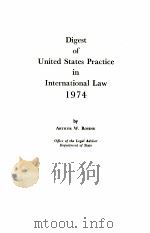
- DIGEST OF UNITED STATES PRACTICE IN INTERNATIONAL LAW 1974
- 1975 DEPARAMENT OF STATE PUBLICATION
-

- THE ACQUISITION OF TERRITORY IN INTERNATIONAL LAW
- 1963 MANCHESTER UNIVERSITY PRESS
-

- ASIAN STATES AND THE DEVELOPMENT OF UNIVERSAL INTERNATIONAL LAW
- 1972 VIKAS PUBLICATIONS
-

- THE CONCEPT OF TREATY IN INTERNATIONAL LAW
- 1996 KLUWER LAW INTERNATIONAL
-

- THE LAW OF THE SEA:ARCHIPELAGIC STATES
- 1990 UNITED NATIONS
-

- THE LAW OF THE SEA:PRACTICE OF ARCHIPELAGIC STATES
- 1992 UNITED NATIONS
-
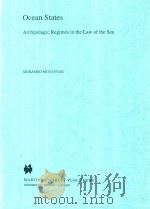
- Ocean States Archipelagic Regimes in the Law of the Sea
- 1995 Martinus Nijhoff Publishers
-

- THE LAW OF INTERNATIONAL BUSINESS IN AUSTRALIA
- 1980 BUTTTERWORTHS
-

- The International law Caracter of the Iran-United States Claims Tribunal
- 1999 Kluwer Law International
-

- International Law and United States Law
- 1999 Ashgate Dartmouth
-
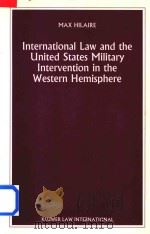
- International Law and the United States Military Intervention in the Western Hemisphere
- 1997 Kluwer Law International
-
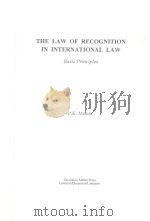
- The Law of Recognition in International Law Basic Principles
- 1994 Edwin Mellen Press
-

- THE LAW OF DOMESTIC RELATIONS IN THE UNITED STATES
- 1968 WEST PUBLISHING CO.
-
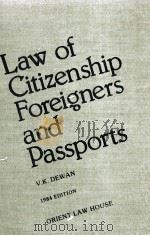
- LAW OF CITIZENSHIP FOREIGNERS AND PASSPORTS
- 1984 FIRST EDITION
-
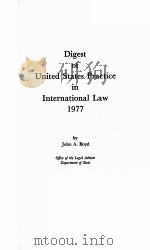
- DIGEST OF UNITED STATES PRACCTICE IN INTERNATIONAL LAW 1977
- 1979 OFFICE OF THE LEGAL ADVISER DEPARTMENT OF STATE
提示:百度云已更名为百度网盘(百度盘),天翼云盘、微盘下载地址……暂未提供。➥ PDF文字可复制化或转WORD